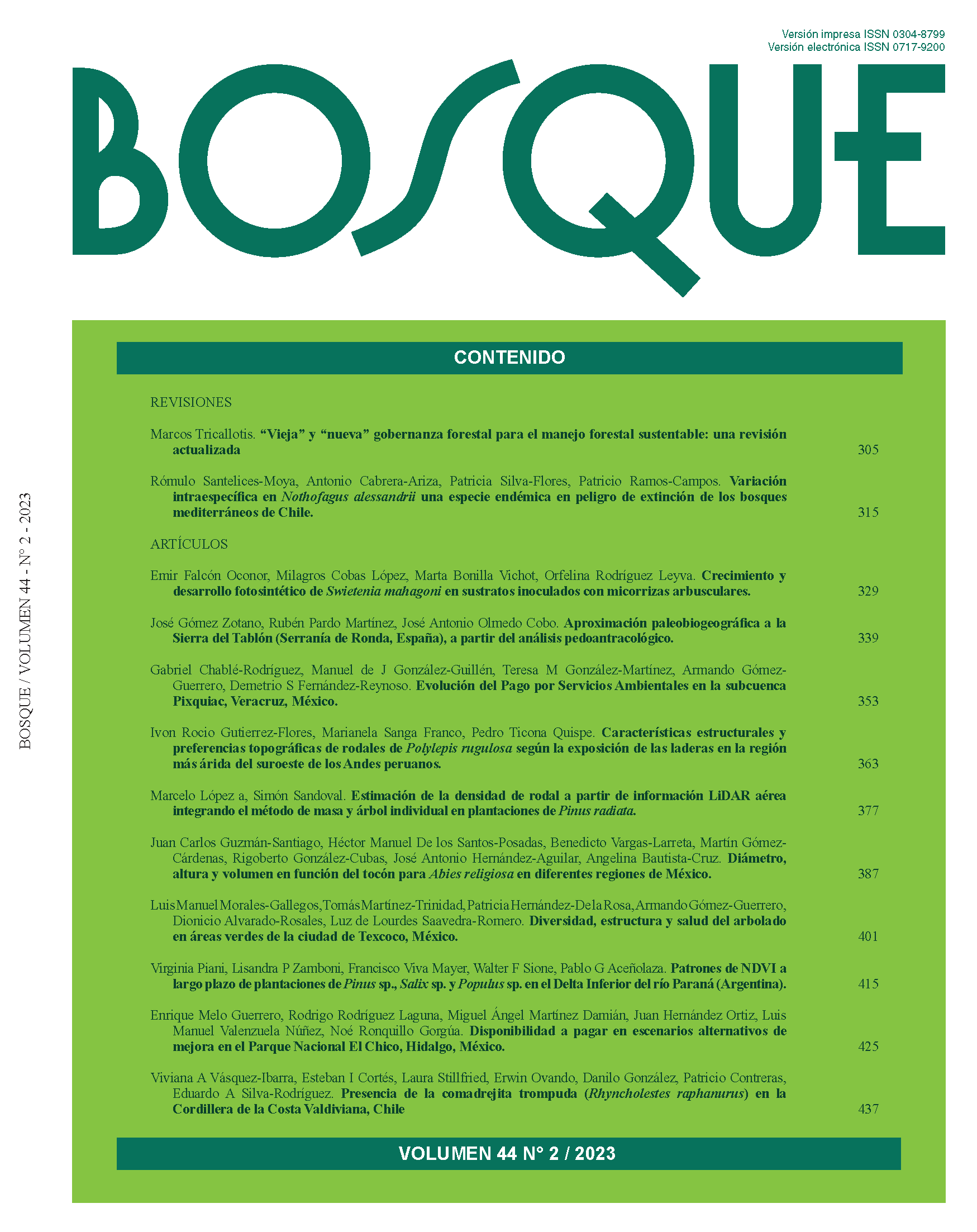Características estructurales y preferencias topográficas de rodales de Polylepis rugulosa según la exposición de las laderas en la región más árida del suroeste de los Andes peruanos
Conteúdo do artigo principal
Resumo
Los bosques de Polylepis son de los menos estudiados y más amenazados a nivel mundial, particularmente Polylepis rugulosa, debido a la alta presión que históricamente ha sufrido por las poblaciones humanas altoandinas. Entre las 45 especies del género, existen muchas preferencias específicas de hábitat, en las que algunas especies tienen preferencia a ciertos niveles de radiación solar, temperatura y humedad, los mismos que son afectados por factores topográficos. Se analizó las diferencias estructurales y los efectos de los factores topográficos en rodales de P. rugulosa en laderas de exposición este y oeste y en dos posiciones topográficas en la región más árida del Perú. La evaluación se realizó en 58 parcelas de 20 x 30 m en tres microcuencas de la región Tacna, ubicados entre los 3.800 a 4.200 m s.n.m. La densidad y área basal fue mayor en las laderas de exposición oeste. La altura y diámetro cambiaron entre ambas exposiciones de laderas, pero fue afectada por la posición topográfica. Las densidad, área basal y cobertura aumentaron con la distancia de flujo vertical (DFV) y distancia de flujo terrestre (DFT) en ambas exposiciones de laderas, acentuándose en la posición topográfica alta. El efecto del índice de protección morfométrica (IPM) y de la pendiente cambió con la posición topográfica en ambas exposiciones de laderas. Estos resultados muestran una mayor presencia de P. rugulosa en laderas de exposición oeste y una baja dependencia de los bosques de P. rugulosa a la disponibilidad hídrica en ambas exposiciones de laderas, particularmente en las posiciones topográficas altas.

